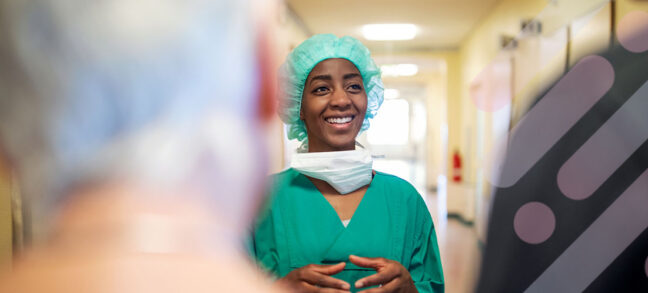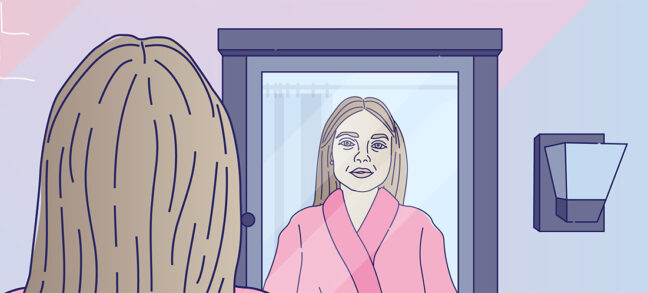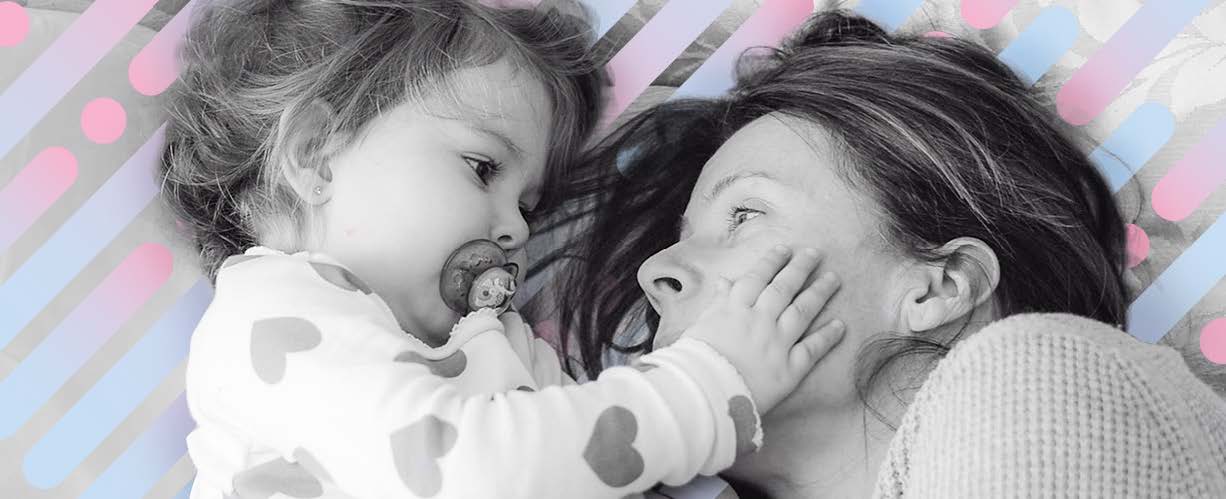Choosing to persevere
Jane knows how to persevere proactively through the unexpected. When she and her husband experienced fertility issues—they decided to use a surrogate. When a routine mammogram discovered tumors in both breasts—she chose to get a double mastectomy.
But life after breast reconstruction continued to reveal hurdles, and for the first time, Jane didn’t have a plan for how to overcome them. During a mastectomy, the nerves that supply sensation to the breast are cut so that the breast tissue can be removed. For Jane, this resulted in loss of sensation from her collarbone to her ribs. This numbness disconnected Jane from moments she didn’t want to miss—including the pivotal moment of finally feeling her newborn daughter.
“I remember taking her in my arms and putting her on my chest,” Jane said. “But I couldn’t feel her skin. I didn’t know that she was there unless I looked at her.”
And it wasn’t just about emotional pain—Jane’s chest also hurt due to capsular contracture, a common complication with breast implants. But it led her to Dr. Constance Chen, a plastic and reconstructive surgeon in New York. Talking with Dr. Chen made Jane realize she had another choice to make—one that might help her feel again.
“Part of telling my story is to really encourage other women in my situation to be proactive,” Jane said.
Deciding to reconnect
Dr. Chen told Jane her discomfort could be solved by removing the implants and replacing them using free flap reconstruction. That’s where natural tissue from a different part of the woman’s body is used to recreate the breasts.
Dr. Chen also told Jane about Resensation, a surgical technique that would allow her to reconnect nerves in her chest that were cut during her mastectomy. Reconnecting the nerves has the potential to lead to a gradual return of feeling in the chest. When Jane heard this, she felt the stirrings of something deep inside her—it was hope, and a new way forward.
“Ask your surgeon if it’s possible to do the nerve grafting. It can be life-changing to the patient,” Jane said. “Just a short additional time in the operating room can change somebody’s entire life.
Advancing breast nerve repair
During her reconstruction, the tissue used to create the breast was placed on the chest, followed by the reattachment of the blood vessels using microsurgical techniques to restore blood flow. The nerves were also reconnected at this time.
Reconnecting the nerves used to be dependent on the length and condition of the nerves in the chest and in the flap. The Resensation technique uses the Avance® Nerve Graft, developed by Axogen, to bridge the gap between the two.
“I use [allograft] on just about every natural tissue breast reconstruction,” Dr. Chen said. “I can take the nerve graft and elongate that nerve so that just about everybody is a candidate for sensory restoration of the breast.”
Embracing the moment
Week by week, Jane felt renewed sensation in her chest. “Last weekend I went swimming. For the first time in six years, I could feel the water on my chest,” she said.
“And now, to be able to reach out and hug my daughter and have her head rest on my chest. And be able to feel her and feel her breath on my skin. That is the most precious thing in the world.”
Are you thinking ahead to your own procedure? Find and contact a Resensation surgeon to make a plan today.
Experience from thousands of uses of Avance Nerve Graft demonstrate a range of recovered sensory and motor function from none to near complete restoration. Each patient outcome is dependent upon the nature and extent of nerve loss or damage, the timing between nerve loss and repair, and the natural course of the patient’s recovery. These testimonials and patient stories provided reflect the experience of the particular individual and do not represent typical results.
_________________________
Avance Nerve Graft is a registered trademark of Axogen Corporation.
Resensation Blog

How does mastectomy impact the nerves in the breast?
One sometimes overlooked aspect of mastectomy is its impact on nerves. Read what happens to nerves during mastectomy and explore…
Read More
What happens during implant breast reconstruction with Resensation®?
By repairing sensory nerves, Resensation® enables you to potentially regain sensation to your chest. Read how this procedure works during…
Read More
how resensation® helped Leanna feel secure in her family’s future
With Resensation®, Leanna can be there to watch her kids grow up—without losing the feeling of being whole.
Read More
sensory retraining: what is it, and how can it help me after resensation®?
Sensory retraining is a series of exercises designed to help you reconnect with your body after breast reconstruction with Resensation®.
Read More